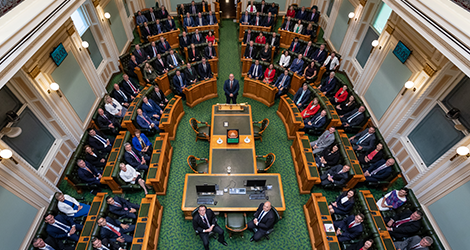The Andrews government’s ninth budget is its toughest. The bill from Victoria’s COVID experience, as well as the state government’s ambitious infrastructure spending, has finally come due.
Isaac Gross
Lecturer, Department of Economics, Faculty of Business and Economics
The pandemic has added more than $30 billion to the state’s total net debt, bringing the total to a whopping $117 billion. (New South Wales’ state debt, by comparison, is .)
Victoria’s floods in 2022 have added to the debt. But so, too, has the Andrews government’s borrowing for its $90 billion ““, encompassing projects from removing Melbourne’s level crossings, extending Melbourne’s , and building .
Victorian Premier Daniel Andrews has punished property investors, private schools, big business and public sector workers in a big-taxing budget that fails to stop his state’s debt spiralling to $171.4bn by 2026.
– The Australian (@australian)
The state’s debt load was manageable when interest rates were low. But with borrowing rates now almost 4% and rising, interest payments are swallowing increasing amounts of the government’s budget. Interest payments on the debt are expected to be $5.5 billion in the 2023-24 financial year, rising to $8 billion by 2026-27.
There are only two ways to fix this – reduce spending or increase taxes. Andrews and Treasurer Tim Pallas have chosen to do a bit of both, with a 10-year plan to pay down the $30 billion COVID debt.
Less infrastructure spending, more taxes
The Victorian government has already announced it will delay several infrastructure projects. The Melbourne Airport rail link and the Geelong rail upgrade have been put on ice due to the federal government’s ongoing review of infrastructure projects. If they’re delayed, as seems likely, they’ll lower the debt burden of the state.
This will be a shame for Melbourne’s frequent flyers, but is probably the right call. Infrastructure Australia says the construction sector is already at capacity on large infrastructure projects. This significantly increases the likelihood of cost and time blowouts.
Infrastructure Australia expects the (recently widened) Tullamarine Freeway won’t reach capacity for at least another decade, so delaying the rail link is probably the best course of action.
Big businesses, holiday-home owners and landlords will be asked to foot the bill for the Victorian government’s COVID-19 debt, as part of a 10-year budget repair plan unveiled in the state budget.
– ABC News (@abcnews)
To help pay down the debt, a suite of tax hikes has been implemented, primarily rises in payroll tax (falling predominantly on large businesses) and land tax (which is largely paid by landlords).
The measures are expected to raise more than $8 billion over the next four years, although they’ll be put in place for a decade.
Reforming land tax
Beyond the immediate task of paying down debt, the Victorian government has taken on the task of land tax reform, proposing to eliminate stamp duty on all industrial and commercial land in favour of an annual land tax.
No changes affect residential land, at least for now. But this could change if the reform proves popular.
Land taxes are the most efficient, and hardest to dodge, form of taxation.
Taxes on labour, such as income tax, can . Taxes on company profits can discourage investment and lead businesses to set up shop elsewhere. Land cannot be moved, and taxing it does not discourage its use.
The biggest problem with replacing stamp duty with land tax is that it often takes a lot of time and money for a fair transition to occur. In the Australian Capital Territory, a transition that began in 2012 is






